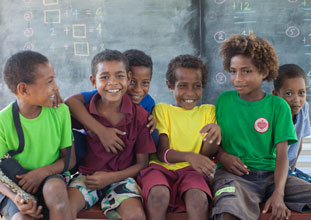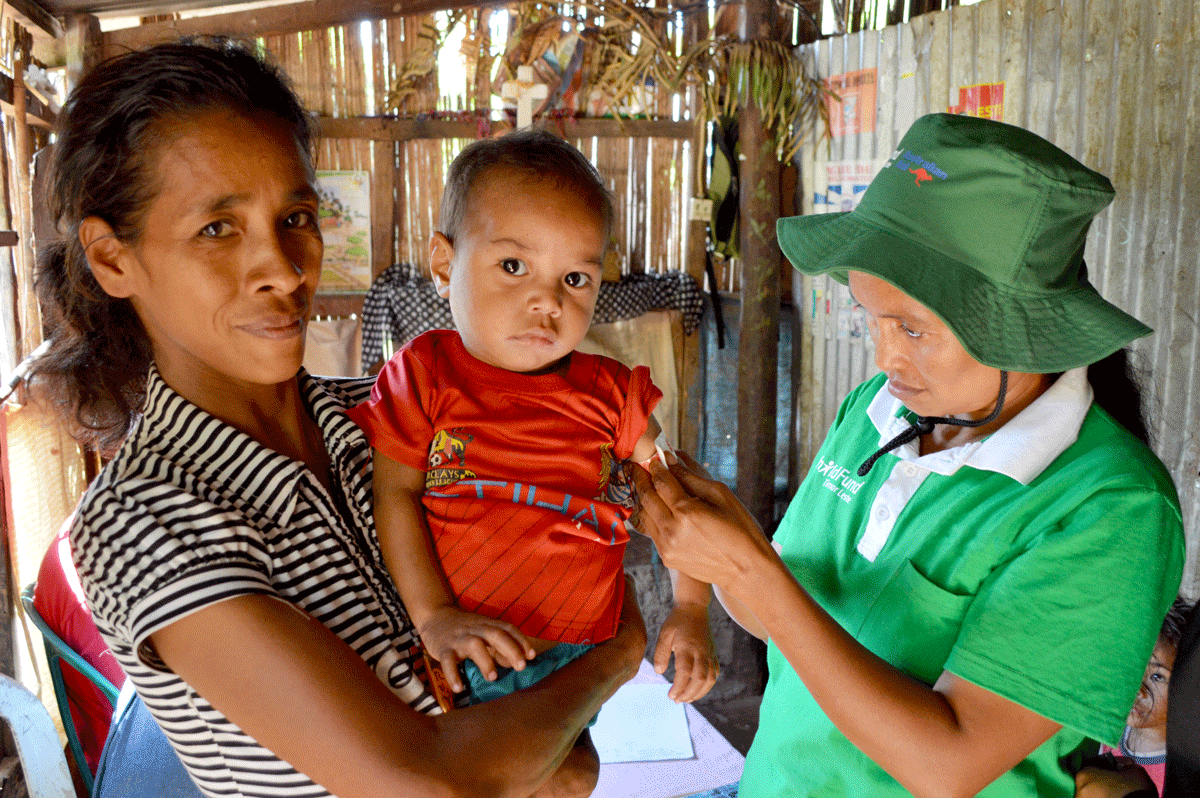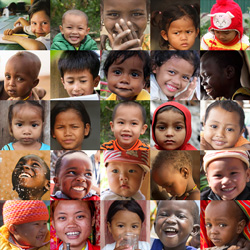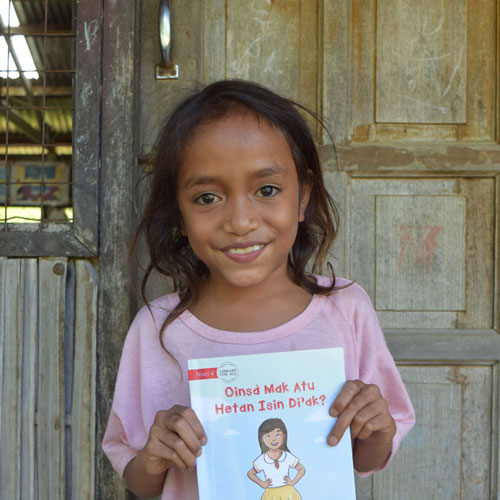Over the last two decades, international aid has contributed to huge strides in poverty reduction, with extreme poverty rates falling in every region of the developing world. Since 1990, there are four million fewer child deaths each year, global primary school enrolment has reached an all-time high of 90% and over 2 billion people have gained access to improved drinking water.*
However, misconceptions about the effectiveness of aid persist among Australians, according to ChildFund Australia’s 2012 Perceptions of Child Poverty and Aid Effectiveness survey. The survey reveals the number of Australians who think aid has been ‘effective’ in improving the overall standard of living in developing countries has dropped from 76% in 2007 to 57% in 2012. Over a third (36%) of Australians believe aid has been ‘ineffective’. This is despite the fact that Australians rate international aid second only to political stability in terms of factors most important in poverty reduction.
The survey also finds less than one-third of Australians (28%) believe that the lives of children in developing countries have improved over the last 10 years. The greatest proportion of Australians (40%) say children’s lives have ‘remained unchanged’, and the remaining quarter (27%) say their lives have ‘worsened’.
Nigel Spence, CEO of ChildFund Australia, said: “We need to change the way people think about international aid. Australians are presented with myriad stories and images about global poverty. While some of the progress is reported, the greater focus is on the many problems that persist. The complex and sometimes conflicting accounts can be experienced as an overwhelming and negative picture.
“Our survey suggests that for most Australians, the problems continue to overshadow the substantial progress that is being made in reducing poverty. It’s vital for organisations to effectively communicate the success of our aid programs to shift perceptions and encourage continued support from the Australian community.”
Evidence shows that aid initiatives to provide clean and safe water have been particularly effective, such as the boreholes recently drilled in drought-affected parts of Ethiopia with the support of ChildFund. According to The Millennium Development Goals Report 2012, the target of halving the proportion of people globally who lack access to safe water by 2015 has been reached – five years ahead of schedule.
Between 1990 and 2010, over 2 billion people gained access to improved drinking water sources, such as piped water systems and protected wells. If current trends continue, 92 per cent of the global population will be covered by 2015.*
Mr. Spence adds: “Australians should feel very reassured by these latest findings. Long-term development programs are helping reach important goals to ease poverty in developing countries. This should encourage continued investment in our international aid programs, which are clearly making headway in reducing poverty for the world’s poorest children and families.”
Australian children want to see more action on global poverty
Nine out of 10 Australian children (87%) say it is important for people in Australia to try and do something to reduce the number of children overseas who grow up in poverty, with the number-one reason being ‘because no child anywhere should grow up in poverty’.
The vast majority of Australian children also recognise how lucky they are to live in Australia, with 89% saying they think the lives of children in developing countries are ‘a lot worse’ than their life.
At the same time, most Australian children do not believe that current aid efforts are improving the lives of their peers overseas. Only a quarter (25%) think aid is ‘effective’ in reducing poverty for children in overseas countries, while almost two-thirds (63%) say it is ‘ineffective’.
Asked whether they believe the lives of children in poor countries are getting better or worse, or has there been no real change, only 12% say ‘better’, while 38% say there has been ‘no real change’ and a third (33%) say that the lives of children in poor countries are getting ‘worse’.
Despite their concerns about the effectiveness of aid, 42% of Australian children say Û÷Australians should give more money to help children in poor countries’.
There is also considerable support among Australian children to learn more about developing countries and international aid at school, with 50% of Australian children saying they should be taught Û÷more’, 40% Û÷the same’ and just 3% ‘less’.
“As a child-focused agency, ChildFund recognises children as active citizens with important perspectives and opinions to offer. Additionally, Australian children are the next generation of opinion-shapers on aid and development issues,” said Mr. Spence.
“It is reassuring that Australian children show empathy and compassion for their peers overseas and are keen to learn more about global issues. However, they do show a more pessimistic view than adults about the progress being made. We hope through global education initiatives, such as our ChildFund Connect program, over time we’ll see a more positive outlook from young Australians.”
*Progress results taken from the United Nations’ Millennium Development Goals Report 2012, released in July 2012.
The 2012 Perceptions of Child Poverty and Aid Effectiveness survey is the fifth report from ChildFund Australia that surveys 1,000 Australian adults and their attitudes towards international aid and child poverty. For the past three years, 200 Australian children have also been surveyed.








